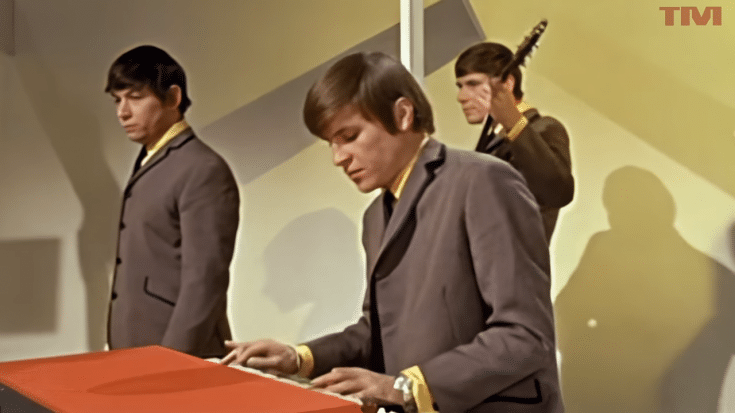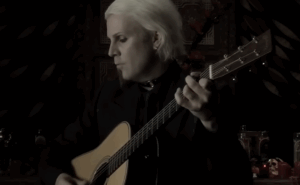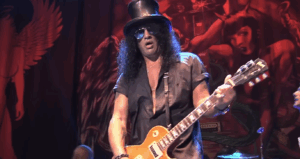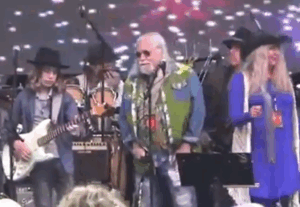British Invasion Hits of the ’60s

via @HolidayMusic / YouTube
The 1960s were a turning point for rock music, and few movements shaped its evolution like the British Invasion. Bands from across the Atlantic didn’t just climb the charts—they redefined what rock could be, blending raw energy with innovative sounds that captivated audiences worldwide.
With electrifying riffs, bold lyrics, and unforgettable melodies, these artists didn’t just make music; they created anthems that still resonate today. Their influence extended far beyond their era, inspiring generations of musicians and earning them a place in the Rock and Roll Hall of Fame.
This list revisits the defining hits of the British Invasion, the songs that sparked Beatlemania, challenged the status quo, and set a new standard for rock and roll.
10. The Who – “I Can See For Miles”
When The Who released “I Can See for Miles” in 1967, it became one of their most sonically ambitious recordings. The song’s powerful drumming by Keith Moon, layered harmonies, and Pete Townshend’s roaring guitar work created a psychedelic rock masterpiece. It reached No. 9 on the U.S. Billboard Hot 100, making it The Who’s biggest American hit at the time.
Many music historians believe this track directly influenced The Beatles’ “Helter Skelter.” Paul McCartney was reportedly trying to outdo the intensity of “I Can See for Miles” when he wrote the heavy-hitting White Album track. This rivalry between British bands pushed the boundaries of rock music.
Despite its success, Townshend was disappointed it didn’t perform even better on the charts. Nevertheless, the song remains a landmark in British rock history and a defining moment for The Who.
9. The Zombies – “She’s Not There”
“She’s Not There” was The Zombies’ debut single, released in 1964. The track, written by keyboardist Rod Argent, combined jazz-influenced chord progressions with the smooth yet haunting vocals of Colin Blunstone. It quickly became a transatlantic hit, reaching No. 2 on the U.S. Billboard Hot 100.
The song’s mysterious lyrics and moody instrumentation set it apart from the typical rock sound of the time. It was one of the first British Invasion hits to showcase a more sophisticated approach to songwriting and arrangement.
Even decades later, “She’s Not There” remains a favorite among music fans, frequently covered by artists and used in films and TV shows to evoke a sense of ’60s nostalgia.
8. The Kinks – “All Day and All of the Night”
Following the success of “You Really Got Me,” The Kinks continued their raw, aggressive sound with “All Day and All of the Night.” Released in late 1964, the track featured a distorted power chord riff that would influence generations of rock musicians.
Ray Davies’ energetic vocals and Dave Davies’ signature guitar tone helped define the early sound of hard rock and punk. The song charted in both the U.K. and the U.S., proving The Kinks’ staying power.
Its impact can be heard in later rock bands such as The Ramones and Van Halen, who took inspiration from The Kinks’ pioneering approach to guitar-driven music. The song remains one of The Kinks’ most celebrated tracks and a staple of ’60s rock playlists.
7. The Rolling Stones – “Paint It Black”
“Paint It Black” was a groundbreaking song for The Rolling Stones, released in 1966. Featuring Brian Jones’ eerie sitar riff, the track introduced elements of Eastern music to rock audiences. Its dark lyrics and haunting melody made it one of the band’s most memorable hits.
The song topped both the U.S. and U.K. charts, marking a departure from the band’s earlier blues-based sound. Mick Jagger’s vocal performance, combined with the relentless drumming of Charlie Watts, created an urgent, hypnotic atmosphere.
“Paint It Black” has been covered and adapted by numerous artists over the years, and its presence in films, TV series, and even video games has ensured its place in rock history. The song’s brooding and intense nature continues to captivate audiences decades after its release.
6. The Animals – “The House of the Rising Sun”
Few songs carry the weight of history like “The House of the Rising Sun.” The Animals’ 1964 version of this traditional folk song transformed it into a haunting rock ballad, driven by Eric Burdon’s powerful vocals and Alan Price’s dramatic organ playing.
The track became a No. 1 hit in both the U.S. and the U.K., making The Animals one of the standout bands of the British Invasion. Its five-minute length was unusual for a single at the time, but its emotional intensity kept listeners captivated.
The song’s origins can be traced back to 19th-century folk music, making it one of the oldest pieces to achieve rock stardom. Its influence can still be felt today, with numerous artists covering the song and new generations discovering its timeless appeal.
5. The Beatles – “She Loves You”
Before Beatlemania exploded worldwide, “She Loves You” set the stage. Released in 1963, the song became the best-selling single of the decade in the U.K. and cemented The Beatles’ reputation as the biggest band in the world.
With its infectious “Yeah, yeah, yeah” chorus, tight harmonies, and energetic rhythm, the track embodied the optimism of early ’60s pop. It was one of the first British Invasion songs to make a significant impact on American audiences.
Even today, “She Loves You” is one of the most recognizable Beatles songs, a defining anthem of their early years. The track was a cultural phenomenon, sparking a wave of fan hysteria and influencing countless future pop artists.
4. The Kinks – “You Really Got Me”
“You Really Got Me” was the song that put The Kinks on the map. Released in 1964, its distorted, power-chord-driven riff is often credited with laying the foundation for hard rock and heavy metal.
The song’s raw energy and Ray Davies’ commanding vocals made it an instant classic. It reached No. 1 in the U.K. and No. 7 in the U.S., helping to establish The Kinks as one of the most influential bands of the British Invasion.
Its impact can still be heard in countless rock bands that followed, proving that a simple, powerful riff can change music history. The song remains a fan favorite and is frequently listed among the greatest rock songs of all time.
3. The Who – “My Generation”
Few songs capture the rebellious spirit of youth quite like “My Generation.” Released in 1965, it became an anthem for young people who felt misunderstood by the older generation.
Roger Daltrey’s stuttering vocals, John Entwistle’s aggressive bass solo, and Keith Moon’s chaotic drumming created a track that sounded revolutionary at the time. The song’s famous line, “Hope I die before I get old,” became a rallying cry for the counterculture movement.
The song’s legacy continues today, frequently appearing in films and documentaries about the 1960s. Many punk and alternative rock bands cite “My Generation” as a major influence on their music.
2. The Beatles – “I Want to Hold Your Hand”
“I Want to Hold Your Hand” was the song that truly launched Beatlemania in America. Released in late 1963, it became The Beatles’ first U.S. No. 1 hit, paving the way for the British Invasion.
The song’s uplifting lyrics, catchy melody, and tight harmonies perfectly captured the excitement of young love. It was the band’s most polished production up to that point, showing their evolution as songwriters.
The Beatles’ performance of “I Want to Hold Your Hand” on The Ed Sullivan Show in 1964 remains one of the most iconic moments in music history, forever changing the landscape of rock and pop.
1. The Rolling Stones – “(I Can’t Get No) Satisfaction”
“(I Can’t Get No) Satisfaction” is perhaps the ultimate British Invasion song. Released in 1965, its instantly recognizable riff, played by Keith Richards, set the standard for rock guitar.
Mick Jagger’s lyrics, filled with frustration and defiance, spoke to a generation of youth looking for something more. The song became the Rolling Stones’ first U.S. No. 1 hit, cementing their status as rock and roll’s bad boys.
Even today, “Satisfaction” remains one of the greatest rock songs of all time, proof of the enduring power of the British Invasion.





















